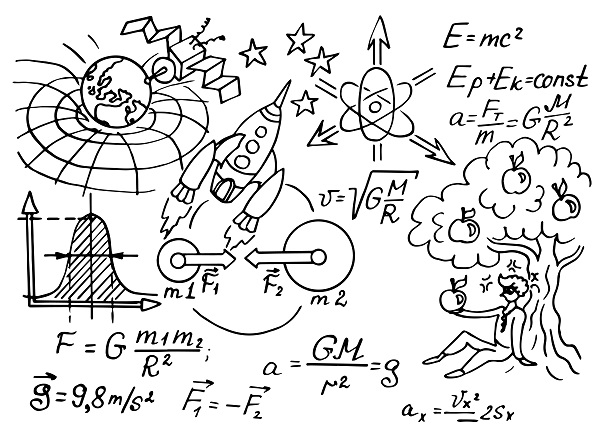
Using Newton's Universal Law of Gravitation to find the acceleration of gravity is a matter of comparing that law with Newton's Second Law when finding weight.
Newton's Universal Law of Gravitation for g
\(\large\mathsf{ g = \frac{GM}{r^2} }\)
...where G is the universal gravitational constant of 6.673 x 10-11 Nm2/kg2, M is the mass of the planetary object (i.e. Moon, planet, Sun, etc.) and r is the distance between the centers of the objects.
Much like the law in its original form, using this equation is a matter of substituting what you know into the equation and solving using your algebra skills. Consider the problem: Find the acceleration due to gravity on an astronaut who is 105 km above the surface of a moon near Jupiter. The moon's mass is 4.56 x 1020 kg and its radius is 1.34 x 106 m.
\(\mathsf{ g = \frac{GM}{r^2} }\)
\(\mathsf{ g = \frac{(6.673 \times 10^{-11} \text{ Nm}^2 \text{/kg}^2)(4.56 \times 10^{20} \text{ kg})}{(1.34 \times 10^{6} \text{ m} + 1.05 \times 10^{5} \text{ m})^2} }\)
\(\mathsf{ g = \frac{3.04 \times 10^{10} \text{ Nm}^2 \text{/kg} }{(1.445 \times 10^{6} \text{ m})^2} }\)
\(\mathsf{ g = 0.0146 \text{ m/s}^2}\)
Question
Using this equation, show that the acceleration of gravity on surface of the Earth is 9.81 m/s2 if the mass of the Earth is 5.972 x 1024 kg and the radius is 6.371 x 106 m.
\(\small\mathsf{ g = \frac{GM}{r^2} }\)
\(\small\mathsf{ g = \frac{GM}{r^2} }\)
\(\small\mathsf{ g = \frac{(6.673 \times 10^{-11} \text{ Nm}^2 \text{/kg}^2)(5.972 \times 10^{24} \text{ kg})}{(6.371 \times 10^{6} \text{ m})^2} }\)
\(\small\mathsf{ g = 9.818 \text{ m/s}^2}\)
